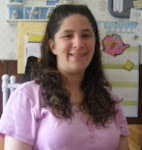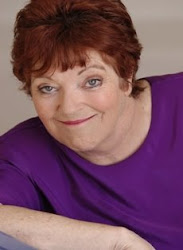Here are five tips to make your picture book manuscript more marketable:
Start right with the problem.
Many times beginner writers begin a picture book with backstory. It’s okay to have this backstory in the first draft, but be sure to get rid of it when you edit. Backstory is unnecessary 90% of the time and it only serves to slow down the beginning of a story, making it weaker. You want to grab the reader right from the start. So don’t be afraid to begin your story at the heart of the problem. It’s okay to set the stage with a sentence or two—but no more!
Have a protagonist readers can relate to.
Generally, children like to listen to stories about other children or animals with children’s characteristics. They don’t want to hear about a grandma or grandpa looking back to the time when they were young. Create characters kids can identify with. When readers can identify with the protagonist, they are drawn into the story and become emotionally involved with it.
Make sure the problem fits the age group.
Be sure your protagonist is facing a problem young readers can relate to. If they can’t relate to it, they won’t care. Losing a toy or losing mommy, being lost, having a tooth pulled out, going to the hairdresser for the first time, having too many freckles, planning a first party... these are all problems kids can identify with. Sure, these subjects have been done a million times. But so what? By creating a new angle about a familiar topic, you can give the topic your own fresh and original slant
Add rising action.
Rising action creates tension—the good stuff that keeps readers glued to the story, turning those pages. After you have created the first big problem for the protagonist, and as he tries to solve it, toss a couple more obstacles into his path to make readers wonder what’s going to happen next. The more readers care about the character’s predicament, the more compelling they’ll find the story.
Leave them with a punch.
Endings are always important, no matter what the genre. But they’re especially important in picture books. Once the protagonist solves the problem and everything falls into place, you must find a way to make the ending memorable. This can be achieved by adding an unexpected twist or by having the character say or do something witty. At the same time, it must feel natural, a perfect and logical progression that has evolved organically with the story. This can be hard to achieve. Try different possibilities until you get that “Aha!” feeling. Don’t be afraid to come up with crazy, over-the-top ideas while you brainstorm.
Keeping these tips in mind when creating your children’s stories will help you make them more marketable and appealing to editors and agents. Like with any craft, writing for children is a never ending learning process. I hope you’ll keep at it and enjoy the journey.
© Copyright 2011 Mayra Calvani.
Mayra Calvani writes fiction and nonfiction for children and adults. Her nonfiction work, The Slippery Art of Book Reviewing was a ForeWord Best Book of the Year Award winner. She’s had over 300 stories, articles, interviews and reviews published. She reviews for SimplySharly.com and is co-editor of Voice in the Dark Ezine. She also offers book reviewing workshops online. Visit her website at http://www.mayracalvani.com/. For her children’s books, visit http://www.mayrassecretbookcase.com/. You can find Voice in the Dark at http://voice-in-the-dark.com/.












































6 comments:
Such good advice! I particularly like the last line. This was great to read.
Thanks Mayra,
These tips are very helpful.
Absolutely wonderful advice. Worth printing out to keep as a reference when drafting a new story. Thank!
Excellent advice. Thanks!
Great tips, Mayra!
Blessings,
J. Aday Kennedy
The Differently-Abled Writer & Speaker
Children's Author of Klutzy Kantor & Marta's Gargantuan Wings
www.jadaykennedy.com
Wonderful advice, Mayra! Thanks for sharing the tips.
Post a Comment